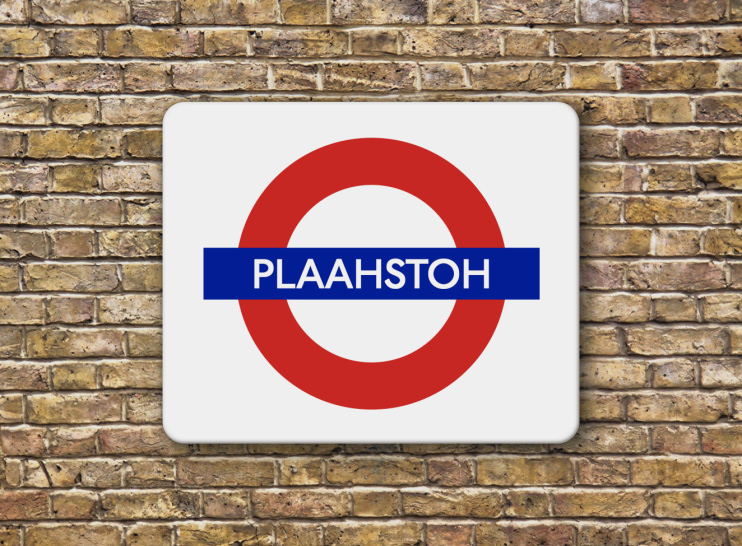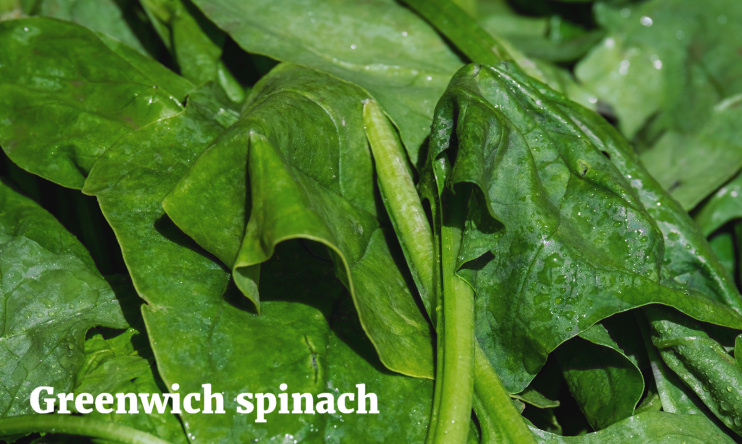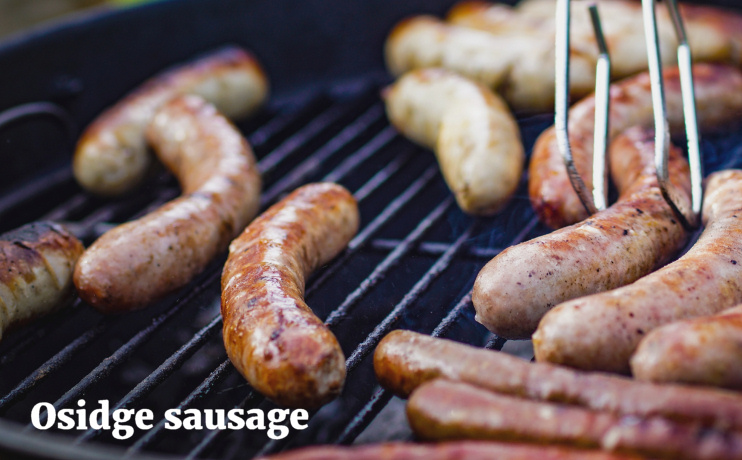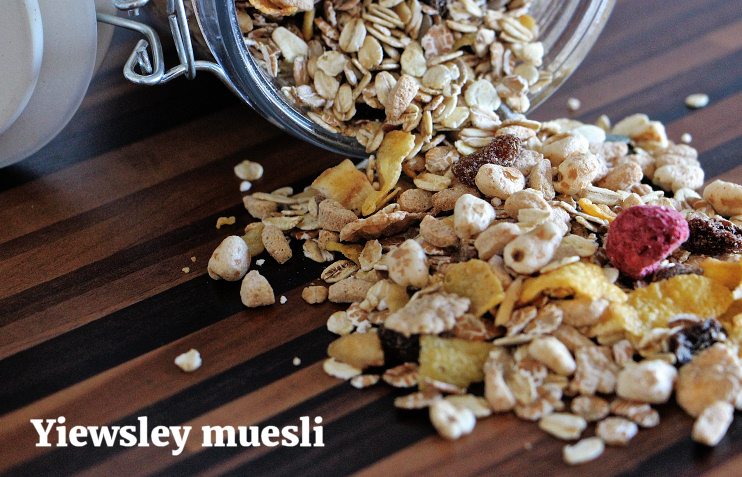temp Pronunciation
Pronunciation guide
How to pronounce selected London place and street names – work in progress on a new version of the page

The correct pronunciations of some London place names are totally unguessable. For example, outsiders can’t reasonably be expected to know how to pronounce ‘Southwark’ or ‘Beauchamp Place’ or those Thames islets called ‘eyots’.
Even official sources make mistakes. When they were first introduced, the recorded announcements on the tube got east London’s Plaistow wrong. A chorus of cockney complaints prompted London Underground to implement a swift correction.
Some pronunciations that are obvious to Brits can be baffling to everyone else. The American writer Jean Hannah Edelstein has blogged about her time as a London resident: “The first place I lived was Great Dover Street, an LSE hall of residence in Borough, which was pronounced ‘burra’, which I only learned when I got to the tube stop and heard it announced. Which I couldn’t quite believe.”
Certain well-known London addresses can be famously difficult for foreign visitors to articulate properly. Leicester and Grosvenor Squares are classic instances. And this author has eastern European friends who speak excellent English yet are incapable of saying ‘Thames’ right.
In the past, more place names had quirky pronunciations than is the case today – and the list below mentions several ‘lost’ variations. Nowadays, many London localities have relatively transient populations and newcomers often simply pronounce place names as they’re written. Only when a peculiar pronunciation is deeply entrenched is it likely to survive.
The suggested pronunciations are for standard London English rather than hardcore cockney (in which, for example, Rotherhithe becomes ‘Rovverive’), but a few cockney variations are mentioned where they are particularly characteristic.
Finally, it’s worth bearing in mind that Londoners were pioneers of the non-rhotic accent – in which, for example, words like ‘balmy’ and ‘barmy’ are pronounced the same. The ‘r’ is therefore not heard at all in place names like Clerkenwell, Deptford and many more.
Please make contact if you’d like to suggest a place name that should be added to this guide.
For each entry in the list below there’s a ‘play’ icon for the audio clip, followed by a simplified pronunciation and then a transcription using the International Phonetic Alphabet. There’s a key to the phonetic symbols used here at the bottom of this article.
In the simplified pronunciations, stressed syllables are capitalised.
In both the simplified and phonetic versions a parenthetical character indicates one that is optionally or barely articulated and a rotated ‘e’ (ə) indicates the indeterminate vowel sound known as a schwa.
Agar Town
AY-gah town or AY-gə town
ˈeɪɡɑ: taʊn or ˈeɪɡə taʊn
This locality north of King’s Cross was named after the eccentric and miserly William Agar (1767–1838).
Aldersgate
ALL-dəz-gate
ˈɔːldəzɡeɪt
The name is a corruption of ‘Ealdrēd’s gate’ and probably dates from the late Saxon period.
Aldwych
ALL-dwitch
ˈɔːldwɪtʃ
Unlike Dulwich, Greenwich, etc., the ‘w’ is pronounced.
Anerley
AN-ə-lee
ˈænəlɪ
Rhymes with ‘mannerly’ – see Edward Lear’s limerick.
Aperfield
AP-ə-feeld
ˈæpəˌfiːld
This locality in Biggin Hill was formerly an ‘apple (tree) field’.
Arnos Grove
AH-noss grove
ˈɑːnɒs ɡrəʊv
‘Arnos’ is pronounced as though it never had an apostrophe – but it did.
Beauchamp Place
BEE‑chəm place
ˈbiːtʃəm pleɪs
This is a classic example of the British tendency to strip out any ‘foreignness’ from the pronunciation of its aristocratic titles, such as Viscount Beauchamp, and from the places, streets and houses named after them. The most notable exception to this rule in London is De Beauvoir Town (see below).
Becontree
BECK-ən-tree
ˈbɛkəntriː
Hidden London reluctantly accepts that some residents prefer to pronounce it BEE‑kən‑tree.
Belgravia
bel-GRAY-vee‑ə
bɛlˈɡreɪvɪə
The Marquess of Westminster, who created this district, also held the title Viscount Belgrave (from a hamlet on his Cheshire estate) – hence the name of the central square and by extension the name Belgravia.
Berkeley Square
BAHK-lee square
ˈbɑːklɪ skwɛə
Here’s a link to Frank Sinatra pronouncing ‘Berkeley’ perfectly (but ‘nightingale’ strangely).
Bermondsey
BER-mən-(d)zee
ˈbɜːmən(d)zɪ
Nowadays pronounced as it looks but in the Middle Ages it was pronounced (and sometimes even spelt) ‘Barmesey’.
Bevis Marks
BEV-iss mahx
ˈbɛvɪs mɑːks
This short City street used to be ‘Buries marks’ but some medieval scribe copied the name wrongly and the mistake stuck.
Borough
BURR‑ə
ˈbʌrə
The above guidance applies to the locality in Southwark and all other London usage of ‘borough’ as a separate word. When it is appended as part of a longer place name, such as Farnborough or Southborough it is pronounced ‑bərə or ‑brə.
Bow
boh
bəʊ
Rhymes with ‘go’, and the same applies to Covent Garden’s Bow Street and the City church of St Mary-le-Bow.
Bowes Park
boze pahk
bəʊz pɑːk
This place name seems to be indirectly related to the ‘bow and arrow’ sense of the word ‘bow’.
Brentham
BREN-təm
ˈbrɛntəm
The name was invented at the beginning of the 20th century for this new settlement near the River Brent. Despite the indisputable logic of the ‘BREN-təm’ pronunciation, some locals apparently say ‘BREN-thəm’, which Hidden London finds baffling.
Brondesbury
BRON(D)Z‑b(ə)ry
ˈbrɒn(d)zb(ə)rɪ
The History of the County of Middlesex says, not entirely intelligibly, “The manor or prebend of Brondesbury, Brands, or Broomsbury almost certainly derived its name from Brand (c.1192–1215), listed as prebendary of Brownswood in Hornsey, evidently in confusion with Roger Brun (c.1154), from whom Brownswood presumably took its name, listed as prebendary of Brondesbury.”
Buckingham Palace
BUCK-ing-əm palace
ˈbʌkɪŋəm ˈpælɪs
Like almost every place name ending in ‘ham’ (and London has dozens of them), the ‘h’ is silent in British English.
Cadogan Gate, Lane, Place, Square, etc.
kə-DUG-ən
kəˈdʌɡən
The Cadogan family, who still own much of the land south of Knightsbridge, derive their name from the Welsh cad ‘battle’ and gwogawn ‘glory’.
Carshalton
cah‑SHAWL‑tən
kɑːˈʃɔːltən
Formerly case-HOR-tən (apparently).
Castelnau
KAH‑s(ə)l‑nau
ˈkɑːs(ə)lnɔː
Usually pronounced as in ‘neither castle nor city’ but minorities prefer a couple of French-influenced variations.
Cheam
cheem
tʃiːm
Now pronounced monosyllabically, this was Ceiham in 1086 and Chayham in 1226, probably from words meaning ‘homestead by the tree stumps’.
Chessington
CHESS-ing-tən
ˈtʃɛsɪŋtən
Some locals prefer CHEZZ-ing-tən.
Cheyne Row, Gardens, Walk, etc.
CHAY-nee
ˈtʃeɪnɪ
Derived from William Cheyne, 2nd Viscount Newhaven.
Chiswick
CHIZ-ik
ˈtʃɪzɪk
Rhymes with ‘physic’.
Chiswick Eyot
CHIZ-ik ait
ˈtʃɪzɪk eɪt
The words ‘eyot’ and ‘ait’ are used interchangeably to denote the small islands of the Thames and the two are pronounced identically, as in ‘eight’. (‘Eyot’ can also be pronounced ‘ite’ but this makes an already confusing situation even worse.)
Clapham
CLAP-əm
ˈklæpəm
The name was first recorded c.880 as Cloppaham.
Clerkenwell
CLAHK-ən-well
ˈklɑːkənwɛl
First recorded in Latin (c.1145) as fons clericorum, the clerics’ well.
Cockfosters
COCK-foss-təz
ˈkɒkfɒstəz
Pronounced exactly as it looks – unlike, say, Cockburn’s port (which is pronounced Co’burns).
Colney Hatch
KOH-nee hatch
ˈkəʊnɪ hætʃ
The family who gave their name to this place by a hatch (gate, perhaps into Hollick Wood) may have come from Colney in Hertfordshire, which takes its name from the River Colne and is usually pronounced without an ‘l’ sound.
Conduit Street
CON-dwit street
ˈkɒndwɪt striːt
Aristocrats say CUN-dit but ordinary people say CON-dwit or CON-dew-it.
Coulsdon
COOLZ-dən
ˈkuːlzdən
Purists insist it should be pronounced COALZ‑dən.
Covent Garden
COV-ənt GAR‑d(ə)n or CUV‑ənt GAR‑d(ə)n
ˈkɒvənt ˈɡɑːd(ə)n or ˈkʌvənt ˈɡɑːd(ə)n
It’s posher but less correct (Hidden London believes) to pronounce ‘Covent’ as in ‘coven’ or ‘covenant’.
Cubitt Town
KEW-bit town
ˈkjuːbɪt taʊn
This town was built on the Isle of Dogs in the 1840s by William Cubitt.
Cudham
KUD-əm
ˈkʌdəm
‘The homestead or enclosure of a man called Cuda’.
Dagenham
DAG-(ə)n‑əm
ˈdæɡ(ə)nəm
As in similar place names, such as Tottenham, cockneys barely vocalise the middle vowel at all.
Dalston
DAWL-stən
ˈdɔːlstən
The emphasis on the imaginary ‘w’ increases with one’s cockneyness.
De Beauvoir
də BOH-vwar
də ˈbəʊvwɑːr
Pronounced ‘Də Beevə’ by purists but in Anglo-French style by almost all locals.
Deptford
DE℗T‑fəd
ˈdɛ℗tfəd
Strictly, there should be no ‘p’ sound at all, but it has for some while been creeping back in because of the trend towards pronouncing place names as they are spelt.
Dulwich
DULL-itch
ˈdʌlɪtʃ
Unlike other London ‑wiches, Dulwich was not originally a wīc (specialised farm or trading settlement or harbour); it was a wisc (meadow), where dill grew.
Eastcote
EAST-coat
ˈiːsts-koʊt
Alternatively EAST-kət.
Eltham
EL-təm
ˈɛltəm
The name is probably related to a man called Elta but possibly to one or more swans (elfitu).
Erith
EAR-ith
ˈɪərɪθ
It’s sometimes pronounced ‘Errith’ but this is wrong, in Hidden London’s opinion (and Wendy Cope’s).
Euston
YOO-stən
ˈjuːstən
The name was transferred from Euston Hall in Suffolk, country seat of the dukes of Grafton.
Feltham
FEL-təm
ˈfɛltəm
Feltham probably began as a “homestead or enclosure where mullein or a similar plant grows,” according to David Mills.
Fitzrovia
fits-RO-veea
fɪtsˈrəʊvɪə
A name that seems to have been invented in the 1920s (see Hidden London’s article on Fitzrovia).
Friern Barnet
FRY-ən BAH-nit
ˈfraɪən ˈbɑːnɪt
‘Friern’ is usually pronounced as in ‘friar’, but some locals prefer FREE‑ən.
Fulham
FULL-əm
ˈfʊləm
The name was first recorded c.705 as Fulanham.
Gidea Park
GID-ee‑ə pahk
ˈgɪdɪə pɑːk
Gidiehall was first recorded in 1258 and Guydie hall park was first mentioned in 1668. The name came from the Middle English gidi (giddy), so the hall may have had a wacky appearance – or its inhabitants might have been somewhat skittish.
Gloucester Road, Place, Square, Terrace, etc.
GLOSS-tə
ˈɡlɒstə
In most of its London appearances the ‘Gloucester’ name derives from one of the dukes of Gloucester, usually William Henry (e.g. Gloucester Place) or William Frederick (e.g. Gloucester Gate). Gloucester Road indirectly takes its name from William Henry’s widow, Maria, Duchess of Gloucester.
Goodge Street
[see note]
guːdʒ striːt or ɡʊdʒ striːt
‘Goodge’ is usually pronounced to rhyme with ‘Scrooge’ – but some opt for a shorter (near-close) ‘oo’ sound, as in ‘good’.
Gower Street
GOW‑ə street
ˈɡaʊə striːt
‘Gower’ is pronounced to rhyme with ‘power’.
Greenwich
GRIN-idge or GREN-itch
ˈɡrɪnɪdʒ or ˈɡrɛnɪtʃ
… or some blend of the two, as long as it’s never ‘green’ and never ‘wich’.

Grosvenor Square, Street, Hill, etc.
GRO‑v(ə)nə
ˈgrəʊv(ə)nə
The names come from the Grosvenor family of Eaton Hall, Cheshire, owners and developers of the land in Mayfair, and in Belgravia too.
Hainault
HAY-nawlt or HAY-nolt
ˈheɪnɔːlt or ˈheɪnəʊlt
The name is a fictitiously Frenchified form of the Old English higna holt – meaning a ‘wood belonging to a monastic community’ – but it’s pronounced without any French influence.
Harmondsworth
HAHM-əndz-wəth
ˈhɑːməndzwəθ
Formerly often pronounced without the middle syllable (HAHMZ‑wəth) but nowadays rendered pretty much as it looks.
Havering-atte-Bower
HAY‑v(ə)ring AT‑tee bowr
ˈheɪv(ə)rɪŋ ˌætɪ ˌbaʊə
Haverstock Hill
HAV-ə-stok hill
ˈhævəstɒk hɪl
Heneage Lane
HEN-idge lane
ˈhɛnɪdʒ leɪn
Holborn
HO-bən
ˈhəʊbən
Some Londoners articulate the ‘l’, but Hidden London disapproves. Dropping (or half-dropping) the ‘l’ when it appears between a vowel and a consonant (and at the end of certain words) was once a common trait of working-class London speech. Words like ‘milk’ or ‘bulb’ were traditionally pronounced with something like a ‘w’ sound in place of the ‘l’. There’s evidence that something similar was happening with ‘Holborn’ at least as early as the mid-16th century. With most words this verbal foible didn’t become the accepted norm across all London classes – but with ‘Holborn’ it did, though in a slightly posher form.
Homerton
HOM-ə-tən
ˈhɒmətən
Originally the ‘farmstead or estate of a woman called Hūnburh’ this place was first recorded in 1343, when it was spelt Humberton.
Hounslow
HOWNZ-loh
ˈhaʊnzləʊ
First recorded in Domesday Book, this place may have been either the ‘mound of the hound’ or (less amusingly) ‘tumulus of a man called Hund’.
Isleworth
EYE‑z(ə)l‑wəth
ˈaɪz(ə)lwəθ
Islington
IZ-ling-tən
ˈɪzlɪŋtən
Jermyn Street
JER-min street
ˈdʒɜːmɪn striːt
There is also a ‘German’ school of thought (i.e. JER-mən) while tiny minorities advocate jer-MAIN and JAR-mən.
Lamorbey
LAM-ə-bee
ˈlæməbɪ
Lansbury
LANZ‑b(ə)-ree
ˈlænzb(ə)rɪ
Americans may pronounce Angela Lansbury’s surname something like LANZ-beh-ree but it takes a more contracted form in London English – and the same applies to this estate in Poplar, which is named after her grandfather.
Leadenhall
LED-(ə)n‑haul
ˈlɛd(ə)nˌhɔːl
Leamouth
LEE-məth
ˈliːməθ
Like almost all British place names ending in ‘mouth’, the second syllable is pronounced with the indeterminate vowel sound.
Leicester Square, Street, Place, Court, etc.
LESS-tə
ˈlɛstə
Leighton House
LAY-tən house
ˈleɪtən haʊs
Leman Street
LEE-mən street
ˈliːmən striːt
Many locals prefer LEM-ən, as in ‘lemon’.
Lewisham
LOO-ish-əm
ˈluːɪʃəm
Formerly LOO-iss-(h)əm.
Leyton
LAY-tən
ˈleɪtən
Leytonstone
LAY-tən-stone
ˈleɪtənˌstoʊn
Hidden London doesn’t object to the alternative ending ‘‑stən’ instead of ‘‑stone’, but some people do.
London
LUN-dən
ˈlʌndən
Cockneys pronounce it more like LAHN-dən (formerly sometimes LUN-ən).
Loughton
LOW-tən (LOW to rhyme with COW)
ˈlaʊtən
Loughton isn’t in London but it’s on the London Underground.
Maida Hill and Maida Vale
MAID‑ə hill and MAID‑ə vale
ˈmeɪdə hɪl and ˈmeɪdə veɪl
Although these localities indirectly take their names from Maida in Calabria, there is no hint of Italian in their London pronunciation, which is simply as in ‘made a hill and made a vale’.
Marylebone
MA-ree-li-bən (Marrylibun) or MAH-lee-bən
ˈmærɪlɪbən or ˈmɑːlɪbən
Some authorities do not recognise the ‘Marrylibun’ pronunciation but Hidden London finds this baffling as it’s the one most people use.
Millwall
MILL-wall
ˈmɪlwɔːl
Pronounced exactly as it looks – but serious cockneys tend to put more emphasis on the second syllable than might be expected, as well as pronouncing each ‘ll’ as a semivowel (something like a ‘w’ sound).
Minories
MIN-ər-iz
ˈmɪnərɪz
This City street is named from a former nunnery (1294–1538), the abbey of the Minoresses of St Clare. It’s typical of Londoners to have thought, “‘Minoresses’ is a bit of a mouthful, so I’ll just say ‘Minories’”.
Northolt
NORTH-olt
ˈnɔːʳθəʊlt
Nower Hill
NOH‑ə hill
ˈnəʊə hɪl
‘Nower’ is pronounced to rhyme with ‘slower’.
Osidge
OSS-idge
ˈɒsɪdʒ

Pall Mall
PAL mal
ˈpæl ˌmæl
Nowadays pronounced as in ‘pallet’ and ‘mallet’.
Petrie Museum
PEE-tree museum
ˈpiːtrɪ mjuːˈzɪəm
Some say otherwise but Hidden London believes ‘Petrie’ should be pronounced as in ‘peach tree’ (but without the ‘ch’).
Penge
penj
pɛndʒ
The only purely Celtic place name in London.
Pield Heath
peeld heath
piːld hiːθ
This 16th-century name indicates a piece of heathland that had been stripped (peeled) bare of vegetation.
Plaistow (Newham)
PLAH-stoh (or an even more elongated PLAAH-stoh)
ˈplɑːstəʊ
In certain words, cockneys used to lengthen the ‘a’ sound where most other Londoners wouldn’t. (Some aristocrats also did, in a slightly more refined way.) For example, ‘drastic’ would be pronounced ‘drahstic’. From at least the 16th century Plaistow was conventionally pronounced ‘Plasstoh’ but when this Essex village became a solidly working-class London suburb in the second half of the 19th century its new residents pronounced the first syllable as in the southern English way of saying ‘plaster’. And now every self-respecting Londoner does the same.
NB There is also a Plaistow in Bromley, which is much less well-known and is usually pronounced ‘Playstoh’.
Platt’s Eyot
plats ait
plæts eɪt
See the note on Chiswick Eyot, above.
Rotherhithe
[see note]
ˈrɒðəhaɪð
‘Rother’ is pronounced to rhyme with ‘bother’ and ‘hithe’ to rhyme with ‘scythe’. It used to be pronounced (and sometimes written) ‘Redriff’.
Ruislip
RICE-lip
ˈraɪslɪp
St Helier
sənt HELL-ee‑ə
sənt ˈhɛlɪə
This estate on the Merton/Sutton border was named in honour of Lady St Helier.
St Martin’s‑le-Grand
sənt MAH-tinz lə GRAND
sənt ˈmɑːtɪnz lə ˌɡrænd
Pronounced English style, with no French influence.
St Pancras
sənt PANK-rəss
sənt ˈpæŋkrəs
Usage of the malapropism ‘St Pancreas’ is a sure sign of a newcomer to London or an overzealous spellchecker.
Savile Row
SAV-əll row
ˈsævəl rəʊ
Some say SAV-ill but Hidden London prefers the rhyme with ‘gavel’.
Smitham
[see note]
ˈsmɪðəm
Rhymes with ‘rhythm’.
Somers Town
[see note]
ˈsʌməz taʊn
Pronounced the same as Wandsworth’s Summerstown.
Southall
SOUTH-all
ˈsaʊθɔːl
Unlike Southwark (below) this place name is pronounced as it looks.
Southwark
[see note]
ˈsʌðək
Pronounced like ‘southern’ except that it ends with a ‘k’ not an ‘n’.
Spitalfields
SPIT-əl-feeldz
ˈspɪtəlfiːldz
Once you know that this place was originally the ‘hospital fields’, it should be easy to pronounce it.
Streatham
STRET-əm
ˈstrɛtəm
It has probably been pronounced the same way since the Middle Ages.
Stroud Green
strowd green
straʊd ɡriːn
‘Stroud’ rhymes with ‘cloud’ not ‘clued’.
Surrey Quays
SURR-ee keys
ˈsʌrɪ kiːz
A neologism for Surrey Docks. The old name seems to have carried too many working-class connotations.
Thames
temz
tɛmz
The name may derive from a Celtic root word meaning ‘dark’. Julius Caesar referred to the river as ‘Tamesis’ in 51BC.
Theobalds Road
THE-ə-bauldz road [‘the-’ as in ‘theory’]
ˈθɪəbɔːldz rəʊd
TIB-auldz is (or was) strictly correct – as in the nearby Tybalds estate – but nowadays everyone pronounces it as it looks.
Theydon Bois
THAY-dən boyz or boyce
ˈθeɪdən bɔɪz or bɔɪs
Theydon Bois isn’t in London but it’s on the London Underground.
Tokyngton
TOKE-ing-tən
ˈtəʊkɪŋtən
Tokyngton is a corner of Wembley possessing remarkable ethnic diversity.
Tottenham
TOT-(ə)n‑əm
ˈtɒt(ə)nəm
The same pronunciation applies to Tottenham Court Road, although the names of the district and the street possess only an incidental etymological connection.
Twickenham
TWIK-(ə)n‑əm
ˈtwɪk(ə)nəm
This place name was first recorded in 704 as Tuicanhom.
Vauxhall
VOX-hall
ˈvɒksˌhɔːl
Londoners’ articulation of the ‘h’ ranges from distinct to nonexistent.
Walthamstow
WAWL‑thəm‑stoh
ˈwɔːlθəmstəʊ
The ‘tham’ in Walthamstow and the London Borough of Waltham Forest is pronounced as it is in ‘Gotham’, unlike almost every other London place name containing that group of letters, from Brentham to Thamesmead, where the ‘h’ is ignored.
Wanstead
WONN-stid
ˈwɒnstɪd
The name may have meant ‘white house’ or ‘place by the wen-shaped hill’ or ‘place where wagons are kept’. We’ll almost certainly never know which.
Warwick Avenue
WORR-ick AV‑in‑yu
ˈwɒrɪk ˈævɪˌnjuː
Named after Jane Warwick, of Warwick Hall, Warwick-on-Eden.
Wapping
WOP-ing
ˈwɒpɪŋ
Rhymes with ‘topping’.
Whetstone
WET-stone
ˈwɛtˌstəʊn
HWET-stone is by no means unacceptable but it’s very rarely heard.
Wimbledon
WIM-bəl-dən
ˈwɪmbəldən
What was Wunemannedune around 950 had evolved into Wimbeldon [sic] by 1211.
Woolwich
WOOL-idge or WOOL-itch
ˈwʊlɪdʒ or ˈwʊlɪtʃ
In 918 this place was spelt Uuluuich.
Yeading
YED-ing
ˈjɛdɪŋ
Rhymes with ‘bedding’.
Yiewsley
YOU-zlee
ˈjuːzlɪ
Originally something like ‘Wifel’s Lea’.

Much of the etymological information on this page is drawn from the excellent Dictionary of London Place Names by AD Mills.
See also: Typical features of cockney speech at Wikipedia.
IPA phonetic key
| Character(s) | Sample words |
|---|---|
| ˈ | (stress mark) |
| Consonants | |
| p | pen, copy, happen |
| b | back, baby, job |
| t | tea, tight, button |
| d | day, ladder, odd |
| k | key, clock, school |
| g | get, giggle, ghost |
| tʃ | church, match, nature |
| dʒ | judge, age, soldier |
| f | fat, coffee, rough, photo |
| v | view, heavy, move |
| θ | thing, author, path |
| ð | this, other, smooth |
| s | soon, cease, sister |
| z | zero, music, roses, buzz |
| ʃ | ship, sure, national |
| ʒ | pleasure, vision |
| h | hot, whole, ahead |
| m | more, hammer, sum |
| n | nice, know, funny, sun |
| ŋ | ring, anger, thanks, sung |
| l | light, valley, feel |
| r | right, wrong, sorry, arrange |
| j | yet, use, beauty, few |
| w | wet, one, when, queen |
| Vowels | |
| ɪ | kit, bid, hymn, minute |
| ɛ | dress, bed, head, many |
| æ | trap, bad |
| ɒ | lot, odd, wash |
| ʌ | strut, mud, love, blood |
| ʊ | foot, good, put |
| iː | fleece, sea, machine |
| eɪ | face, day, break |
| aɪ | price, high, try |
| ɔɪ | choice, boy |
| uː | goose, two, blue, group |
| əʊ | goat, show, no |
| aʊ | mouth, now |
| ɪə | near, here, weary |
| ɛə | square, fair, various |
| ɑː | start, father |
| ɔː | thought, law, north, war |
| ʊə | poor, jury, cure |
| ɜː | nurse, stir, learn, refer |
| ə | about, common, standard |
| i | happy, radiate, glorious |
| u | you, influence, situation |
